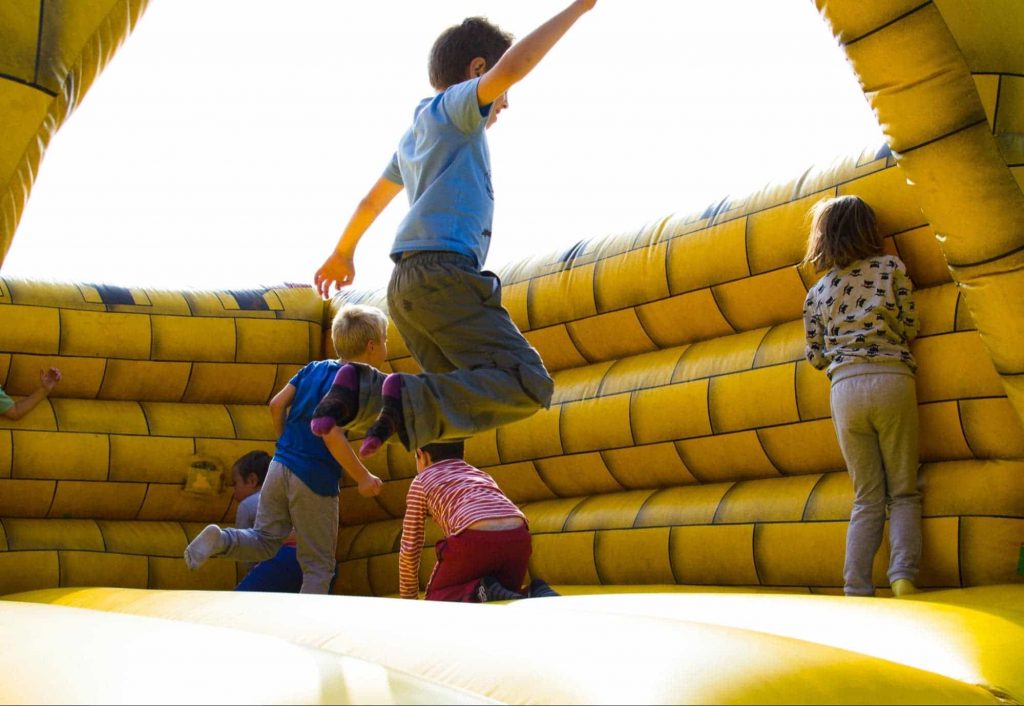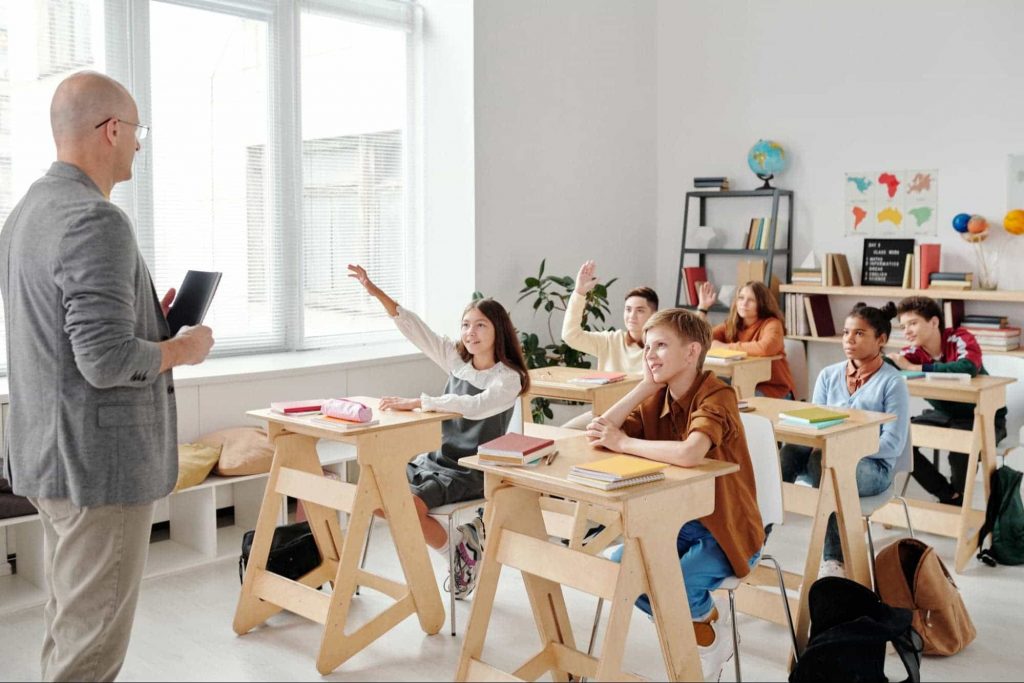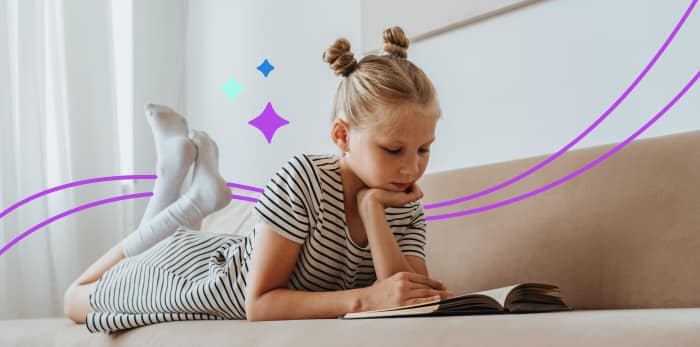A recurring pattern in classrooms across the United States is a lack of participation, which can easily be addressed with Student-Centered Learning.
Students often deem their schooling boring. And this, in turn, creates an atmosphere where learning feels like a task that must be accomplished by the end of the semester.
Math & ELA | PreK To Grade 5
Kids see fun.
You see real learning outcomes.
Watch your kids fall in love with math & reading through our scientifically designed curriculum.
Parents, try for free Teachers, use for free
Despite the extended efforts of teachers, why are students just not engaged enough? And how do we change this classroom monotony? Let’s take a deeper look at the problem at hand and explore a possible solution – Student-Centered Learning.
Why are students not engaged in the classroom?
While some teachers just win over the hearts of students, the problem still persists. It may not be fully apparent at all times, but we can all agree that students would much rather not be in the classroom. And while it’s easy to dismiss this as “typical behavior”, this might just reveal something about your classroom.

The traditional role of a teacher is being a lecturer. Typically, a teacher can be heard saying things like: “Turn to page 142”, “submit your assignments by next week”, “prepare the first 3 chapters for the test”. We all know that. But here’s something that we don’t see.
This traditional method puts one person (the teacher) at the center of the classroom in an active role. While there is nothing wrong with this, it also puts everyone else (the students) in a passive, receptive role.

This is the very reason behind the rising levels of inactivity in schools. Students do not feel like they have an opinion over their learning trajectory and that the teaching methodology is invalidating their needs and interests.
Student-centered learning: Keeping the students at heart
Reforming the classroom is a matter of carefully employing certain practices within the walls of the class. And these practices constitute the student-centered method.
Related Reading: Brilliant Math Quotes to Share with Students to Inspire Them
The Student-Centered Learning method is an innovative design that focuses on the needs, abilities, interests, and learning styles of students instead of their GPAs. The ultimate goal is to turn the learning process into a shared experience.
Key Practices of SCL
- Empowering students to take leadership in the class.
- Teaching students to take ownership of their learning.
- Students put efforts into developing, testing, and refining their thinking.
- Encouraging collaboration among students to work in flexible, cooperative groups.
- Assessing students for process, group work, and product.
- Inclusion of the arts and vocational interests in the academic curriculum
- Clear documentation of teaching objectives.
- Learning-based (and not task-based) thinking and work.
- Inclusion of creative interactive exercises
- Role plays
- Culturally responsive content and delivery of instructions
- Use of student response systems like discussion boards
SplashLearn focuses on refining students’ skills at their core, keeping them at the center of every concept they practice and learn. With engaging mediums like games, worksheets, and live courses, students retain learning whilst being fully engaged!
SCL strategies for teachers
This approach can have widespread consequences in the curriculum design, course content, as well as interactivity of courses. And here’s the best part! You too can start employing SCL in your classroom.
Highlighted below are some of the core concepts of SCL to help you get started with it.
Related Reading: Best Educational Goal Examples that Matter for Students & Teachers

Personalized Learning
Student-Centered Learning acknowledges that not every student is the same. Kids learn at different paces, they have different strengths and weaknesses, their interests differ, and their needs vary. What does this mean for you as an educator?
As a teacher, it is crucial for you to personalize your approach to teaching to the maximum feasible extent. You can do this by:
- Giving students some choice over their curriculum,
- Using more formative assessments than summative.
- Asking open-ended questions (For eg: What do you think about ___? How could you change ___?, etc.)
- Utilizing inquiry-based learning
Ownership
When students are given authority over the classroom, it demands them to take ownership of their and their fellow students’ success. They start to find healthy balances between having fun (incorporating their interests) and doing the needful (covering the curricula).
The teacher in a student-centered classroom is not only an educator but also a facilitator and an activator. Teachers can fulfill these roles by:
- Establishing distinct learning objectives
- Leveraging scores to target weak areas
- Letting students teach
- Teaching digital literacy
- Extending lessons beyond the classroom and into the real world
Mastery over Hours
We have all been part of an academic calendar where tests, assignments, and deadlines determine if we have learned our subjects well enough.
Student-Centered Learning goes slightly awry. Instead of judging the students’ competency based on the hours they spent on a subject, it is judged based upon the mastery of the content.
Measuring how much expertise your students have over a certain concept might be tricky. To make sure that you as a teacher are on the right track, ask yourself the following:
- Are your students able to reflect on the concepts?
- Can they summarize the content effectively?
- What are their 3-2-1s? The 3 things they learned, 2 things they’re curious about, and 1 question they have.
- Do they have any misconceptions regarding the content?
- Do you need to re-teach those left behind and clarify their misconceptions?
Learning without the constraints of time and place
When the classroom turns into a community, it is no longer restricted to its four walls. Direct involvement of students in the educational process and their extended interaction and collaboration develops a sense of community.
And once a community is established among students, conversations from the classroom extend into the playgrounds, sleepovers, and potentially even into their adulthood. No wonder students passing out of SCL learn to work independently and codependently.
How can parents aid student-centered learning?
It is often said that home is the first school and that parents are the first teachers.
Parents can actually facilitate the student-centered journey by proactively taking up practices that develop an important parent-school partnership. The student-centered approach is such that it requires a shared agreement among families, schools, and the student to work together in order to maximize its benefits.
These are the steps that parents can take to aid student-centered learning at home:
- Providing space for children: This might mean an array of different things. From providing a designated place and time for the student to do their homework to letting them pursue their interests. Parents must be cautious of not getting in the way of the child’s exploration.
- Talking: It is as simple as that. A simple open-ended question about what they did in school could open up a series of conversations between you and your young ones. “How was school?”, “How do you feel about it?”, “Tell me about it.”, are all great questions to ask.
- Partnering with teachers: Meeting your child’s teacher will give you some much needed feedback on how they are doing in school. When their teacher is in on SCL, they will instruct you to look after several things. Be prepared to entertain conventionally unorthodox ideas of practicing concepts at home when the teachers ask you to.
- Lead by example: Demonstrating a positive attitude towards education at home can really help the child view education in a different light. If education is dreaded upon and treated like a big task to be fulfilled, children are less likely to pick up a book even if they like it. Academics shouldn’t be painted as a streamlined action nor as a punishment for young minds.
The Way Forward
The definition of education continues to shift in the current day. But what can not be discounted is its end goal: leaving the students more fit for the real world. And while traditional schooling methods are very straightforward, often at times they don’t take into account the equal participation of most of the students.
Student-Centered Learning, which was once introduced to combat this very issue, is now being implemented by many teachers in some variation or the other.
Trying out SCL in your next lesson could be the turning point in your classroom. When the learning is centered towards students, they appreciate having a voice in the classroom. This opens them up to learning effectively and becoming better, well-rounded adults. As the schools gradually reopen, SCL methods continue to create better classrooms all over.
Frequently Asked Questions
What are the characteristics of student-centered learning?
A student-centered classroom differs from a traditional classroom in pretty distinct ways. They are usually much more interactive, engaging, and explorative of new concepts through authentic inquiry. Students have a voice in the evaluation of their learning as well as their projects. Teachers in a student-centered classroom act as guides.
What are some student-centered assessment practices that you can use to assist you?
Some practices to assess learning in student-centered classrooms are self-assessment, peer assessment, portfolios, and formative assessments.
Student-centered assessments encourage students to set goals for their learning and growth, monitor their progress toward these goals, and determine how to address any gaps.
Assessment practices involve providing useful feedback to the students themselves. Their teachers learn what the students would need to progress toward their learning targets, supervise their progress, and help them resolve their hurdles.
What is inquiry-based learning and how is it effective?
Inquiry-based learning derives its name from the practice of teaching students how to question things. It is designed to help students better understand and recall material by critically questioning and engaging with it. The inquiry-based mode uses small-group discussion, guided learning, and learning by application. This builds knowledge through exploration in them, provides enriching experiences, and encourages discussions among students.
How can you support the different learning styles of your students?
Some of the ways to accommodate different learning styles in your classroom are:
- Learn about the learning styles of your students. Some students need to move and dance around, some need visuals, some may need a catchy song or phrase to learn the content, and some may have special learning needs.
- Craft an uncommon experience. This falls in the vein of role play. Turn the classroom into a less monotonous experience by assigning roles to students.
- Leverage multi-sensory approaches. Design lessons in a way that movement, colors, and audio can all be freely used by students.
























